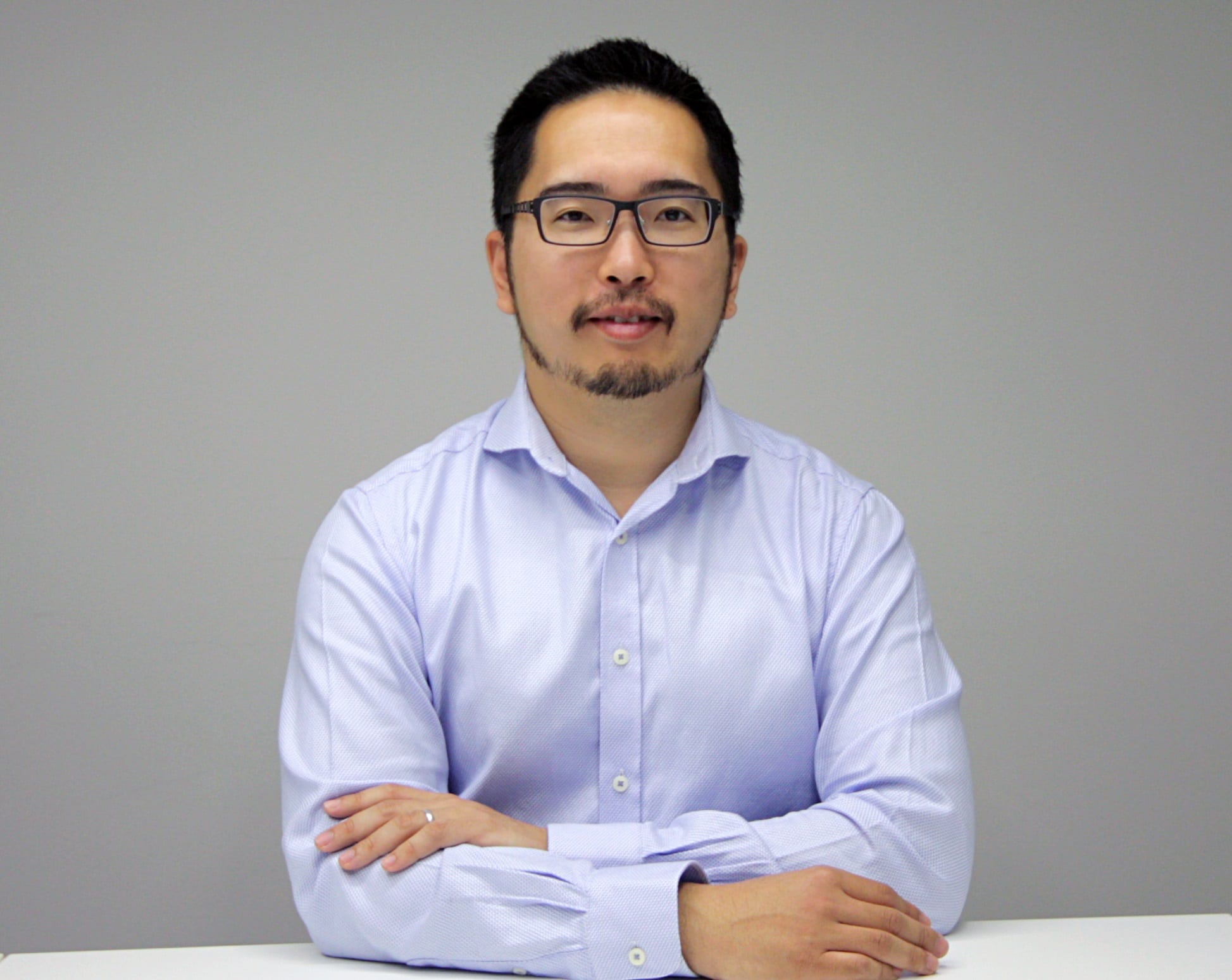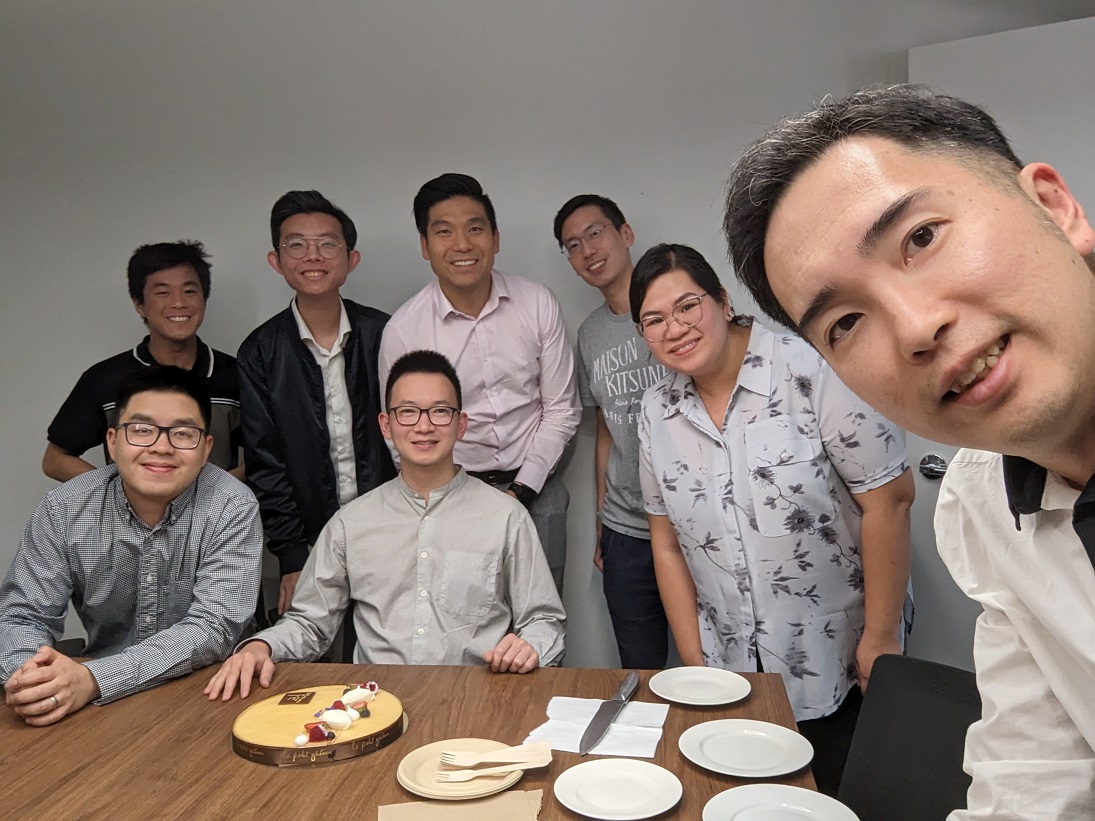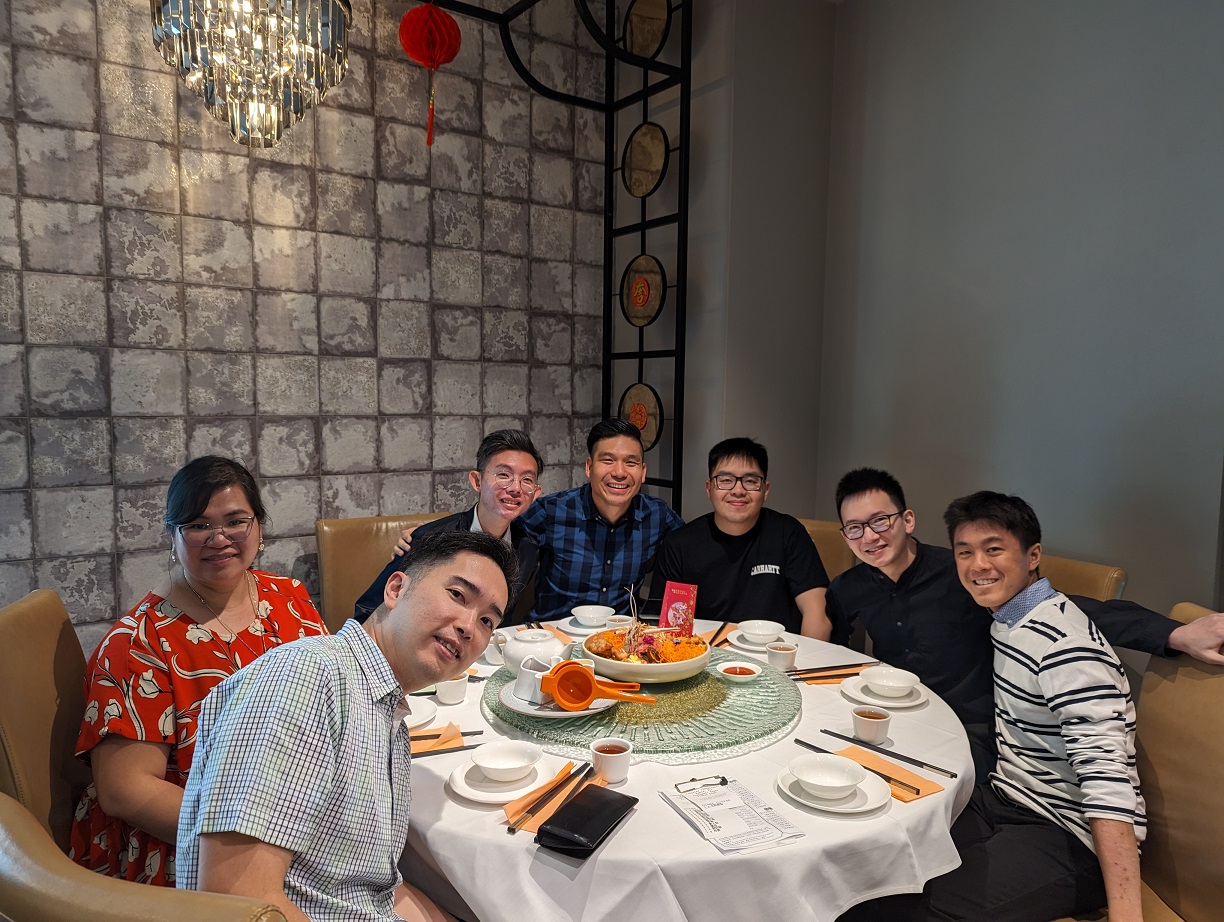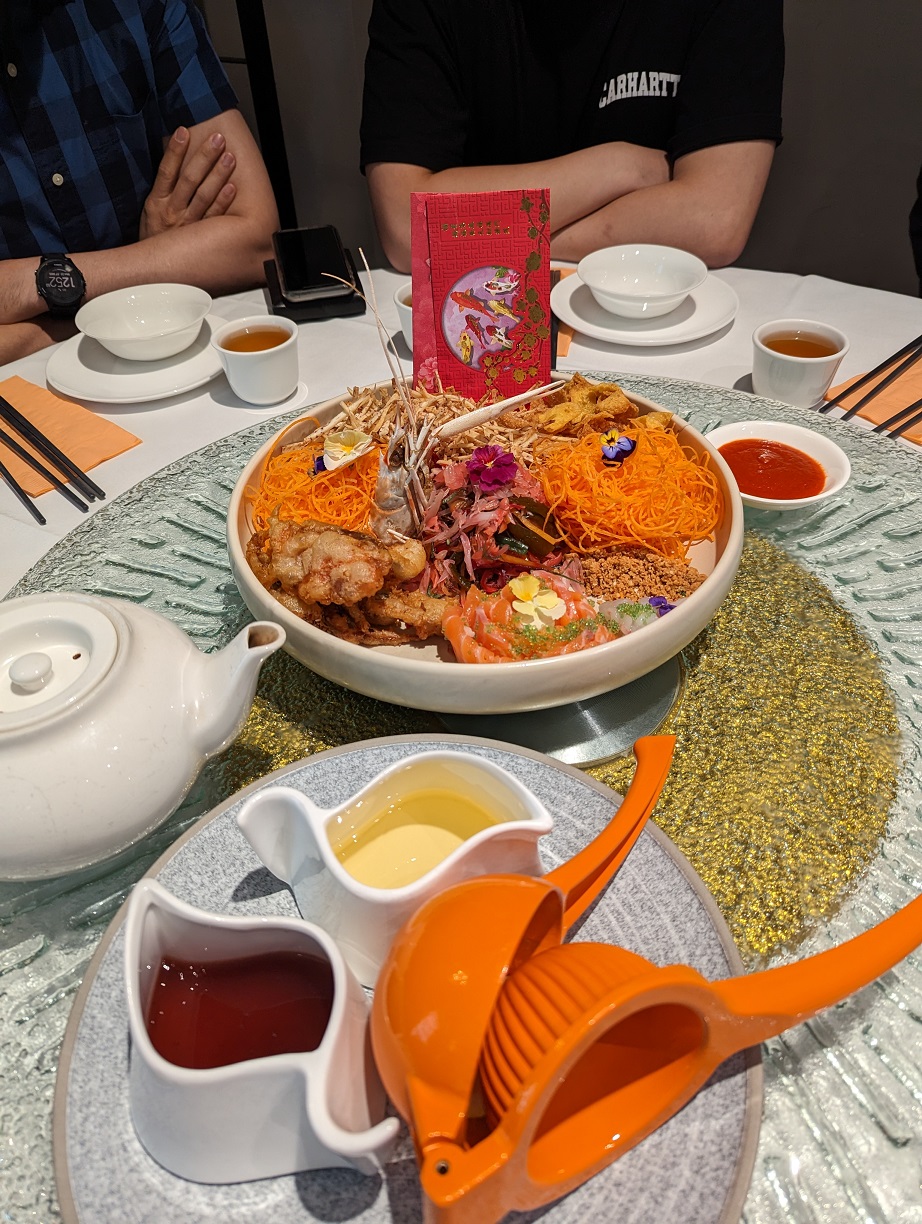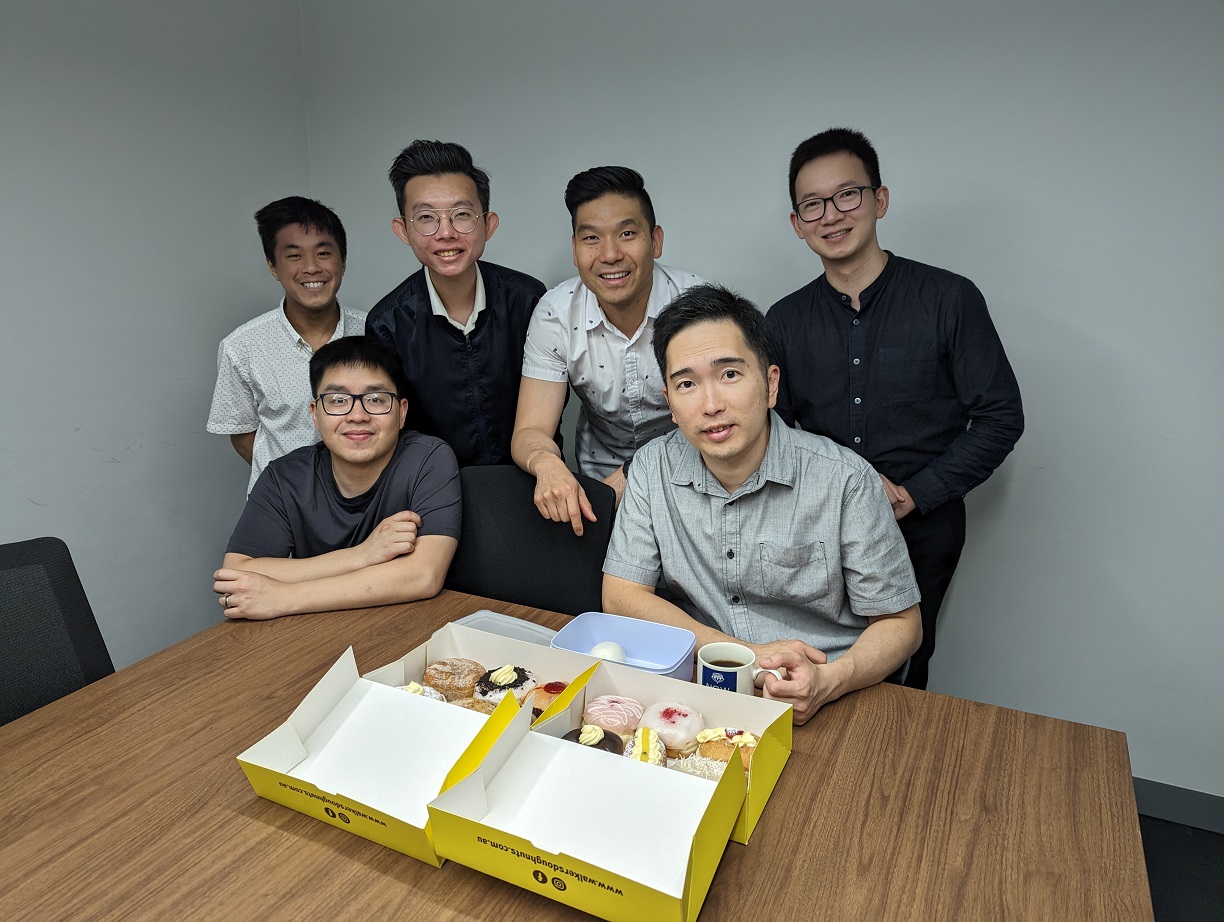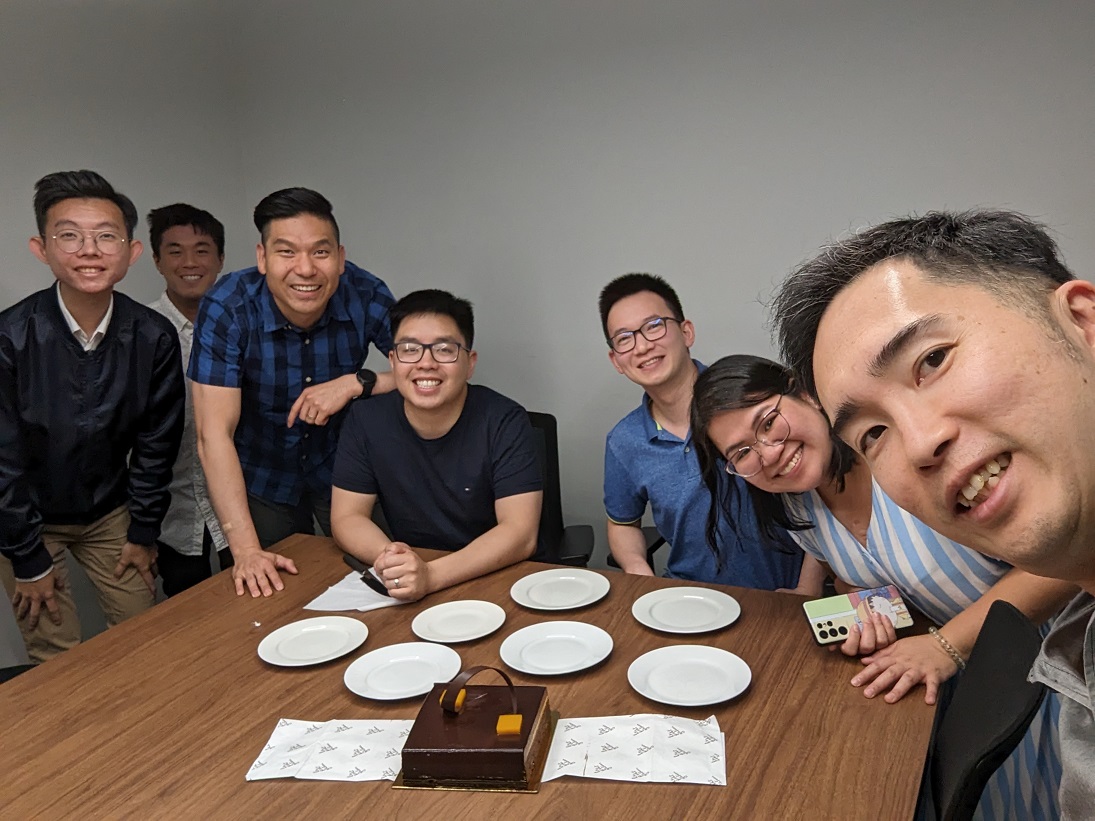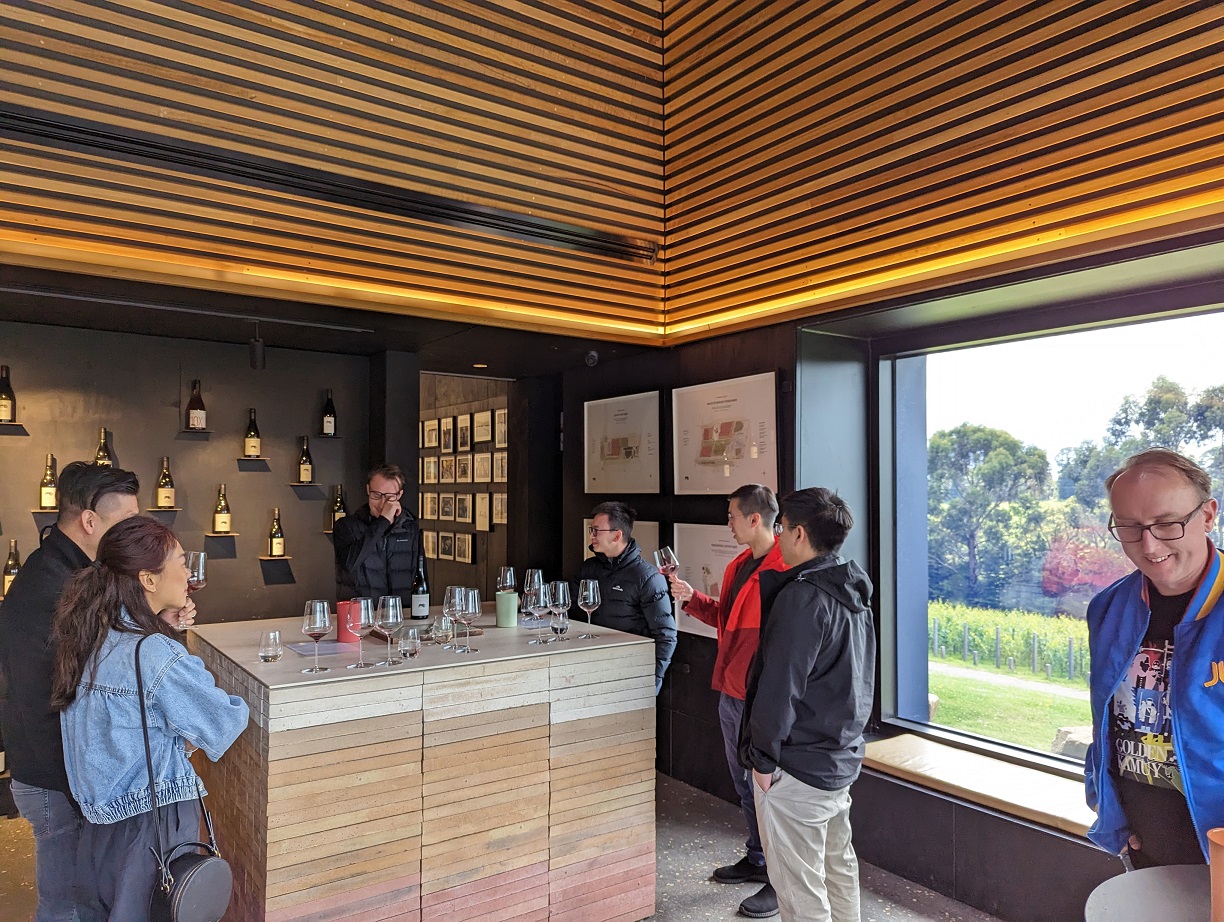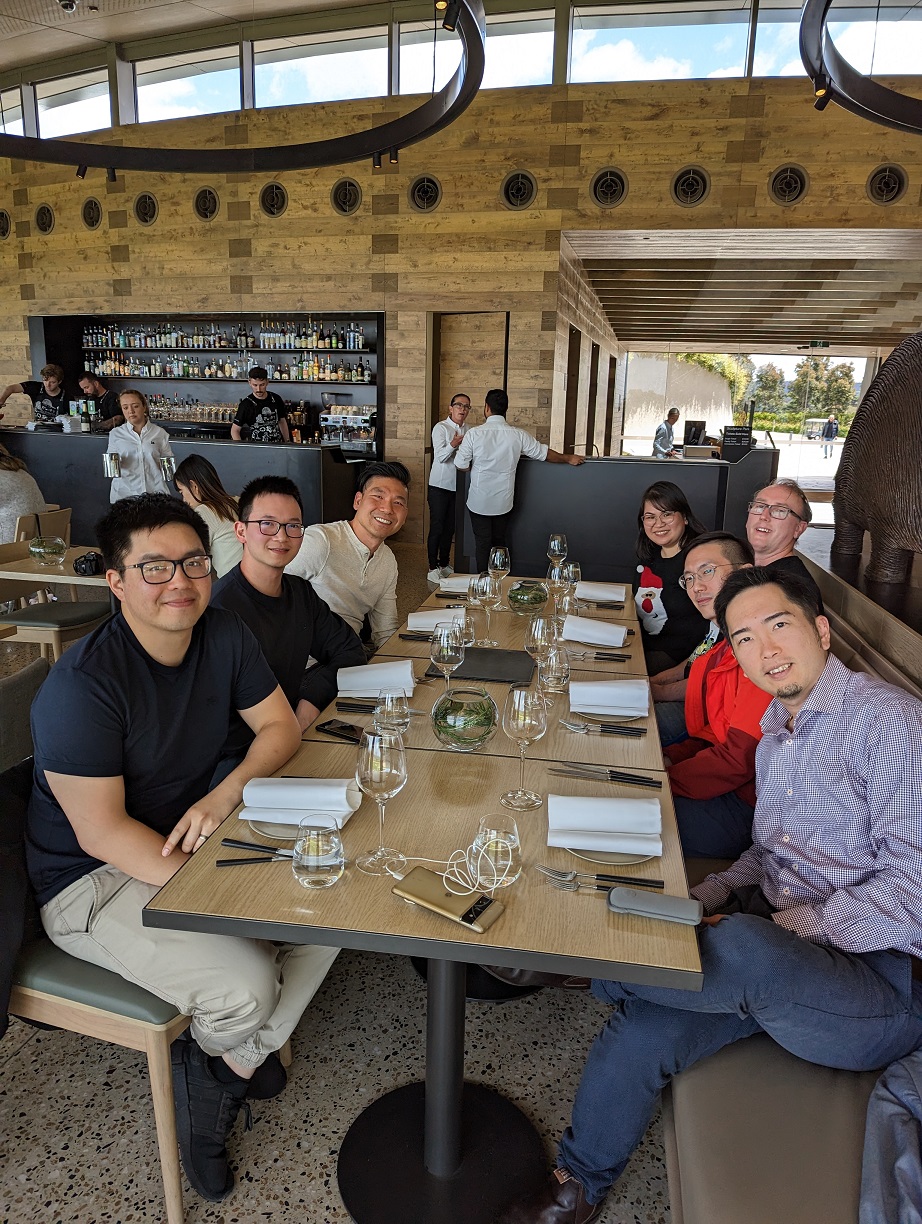Testimonials
In 2013 we were recommended to TJ Consult for our Northland project. They have been our preferred consultant since then.
Throughout the years, both Toshi and Jason have provided valuable advice to the PappaRich team. They spent a considerable of time to gain a deep understanding of our business before they came with a customised recommended approach.
Their specialisation in Mechanical, Electrical and Hydraulic has also enabled our team to negotiate more effectively when it comes to leasing. I will strongly recommend them if you are looking for a right partner to work with!”
Jian Hui Lee - General Manager at PapaRich
INNERMODE had the opportunity to work on a number of fitout projects with TJ Engineers including the CBD consolidation project for the Department of Transport Planning and Local Infrastructure at 1 Spring Street, Melbourne. The project involves refitting 7,000 sqm. over 6 Floors with a budget of $5 million.
Toshihiko and Jason responded to the design brief professionally by conducted thorough quantitative review and audit of the existing building services. The services documents and specifications are well detailed and we specifically find their immediate respond to any site queries commendable. Due to the rigour, quantified evaluation and engineering solution, it had a huge impact on the success of the project.
I fully endorse TJ Engineers for their broad skill of engineering services, including ESD analysis through to highly effective and tactical engineering strategies. Michel Loo - Design Partner at Innermode
TJ Consulting has assisted us across a range of projects over the last 10 years, across various disciplines relevant to Fitout and Base Building.
I’ve found TJ Consulting will always go the extra mile to ensure their Client’s interests are well represented and managed. TJ’s have always been very responsive, able to manage project variables and open to feedback.
While able to manage the requirements of larger projects, TJ still manage to convey the sense of comfort of working with a boutique company that is very close to the detail and our specific needs.
I look forward to continuing our partnership with Toshi, Jason and the team and wouldn’t hesitate to recommend them. David Vallinga - Portfolio Operations Manager at The GPT Group














Our Team
We believe in a diverse range of personel to bring creative skills, thoughts, and ideas to the table.
Technical Articles
How to Identify and Control Harmonics In Your Commercial Building
Written by Kay Chew (Senior Electrical engineer) – May 2021
Image Source: Unsplash
Every commercial building relies on the supply of power and the efficiency of technology. Failure to maintain these foundational aspects of your commercial building and you can quickly face a logistical and financial nightmare.
As equipment and technology can fail in the presence of harmonic voltage, it’s crucial you know how to identify, assess and control harmonics in your commercial building.
TJ Consulting is proud to provide reliable, efficient, economical and sustainable design solutions to support the needs of your commercial systems and technologies.
Read on to discover why harmonics pose a risk to your commercial building, and how to effectively identify and control harmonic effects.
What are harmonics?
Harmonics are currents or voltages are a distortion of the normal electrical current waveform, with frequencies that are integer multipliers of the fundamental power frequency.
As an example, if the fundamental power frequency is 50 Hz, the second harmonic is 100 Hz, the third harmonic is 150 Hz and so on. Harmonics are created by non-linear loads drawing current in pulses, as opposed to a streamlined sinusoidal manner.
Pulses contribute to distorted wave shapes which cause harmonic currents to flow back into your power system – which can lead to significant negative outcomes for commercial buildings.
How are harmonics generated?
Any electronic load is capable of generating harmonics. However, harmonic currents and voltages are typically generated by non-linear loads. Non-linear loads exist in the form of personal computers, multi-function devices (MFDs), battery chargers, UPSs, motor starters, variable speed drives (VSDs), electronic control gears and switch mode power supplies (SMPS).
If these technologies create the image of a bustling commercial workspace, you’re picturing the exact environment susceptible to harmonics. As these non-linear power supplies draw current in high-amplitude short pulses, they create distortion in the electrical current which moves back into the power source and places all equipment connected to that same source at risk.
What harmonic risks exist to my commercial building?
The presence of harmonics may distort the voltage and current waveform in your electrical distribution network. This may affect other users connected to the same network. As a result, the disturbance can cause network overloading, leading to:
- Utility bills tariff and operational cost penalties
- Equipment malfunction
- Increased internal energy losses and lower equipment lifespan
- Metering errors
- Generator failures
How can I measure and resolve harmonics?
The harmonics generated in commercial buildings can be evaluated and measured through power system audits and harmonic filters.
This helps to ensure appropriate steps are taken to reduce harmonics effects and to avoid potential equipment failure and tariff penalties.
In many cases, electrical installation regulations impose a maximum 5% limit for the Total Harmonic Distortion (THD) at the point of common coupling. However, it is the responsibility of the end-user to ensure the harmonics generated are filtered to a safe level. This level is required to eliminate disturbances to other loads connected to the same network.
Where there is a significant presence of multiple sources of high level harmonic distortions (i.e. commercial buildings with high amounts of servers, VSDs etc.), it may be viable for building operators to engage power system specialists to audit the existing power quality. Where needed, consider installing power system optimisers or harmonic filters to achieve higher power quality. Ultimately, these filtering measures increase the performance and efficiency of your electrical system.
What are the benefits of harmonic filters?
Active harmonic filters enable users to meet power quality demand, and gain flexibility and control of the filters – as they are instantaneous sine wave conditioners.
The filter can be connected in parallel at the electrical switchboard to provide conditioning and filtering compensation. This measures the harmonic currents generated from the non-linear loads, and injects the same amount of harmonic current in an opposite phase to cancel harmonics and ensure the line current remains sinusoidal.
The importance of auditing to identify the correct filter specification
It is essential to audit and measure the existing building power quality in order to select a right filter specification.
This will ensure a flexibility of filtering to cater for load fluctuations and the extent of total harmonic voltage distortion at the point of common coupling.
In addition, the range of frequencies to be filtered, as well as the harmonics order to be filtered, can be programmed via a microprocessor based filter controller. This will enable filtration level presets for each selected harmonic order to a level within the required tolerance.
The result is a more efficient use of the available compensation power and achieving higher power quality.
Are you looking for an energy assessment or support within your commercial building? Contact TJ Consulting for a complimentary consultation today.
Opening a new restaurant
Written by Thanh Nguyen (Senior Associate) – June 2021
🙂 Things That Are Exciting: Launching a new restaurant or cafe.
😖 Things That Are NOT Exciting: Kitchen Ventilation.
Here’s why you should be giving equal attention to both…
Because for restaurant and cafes owners, launching a new business is exciting.
But somewhere under the joy and the unbridled optimism comes stress. And when your to-do list consists of a hundred tasks that require organising (and a thousand more that require attention sooner rather than later) it’s easy to let those non-exciting tasks fall to the wayside.
More often than not, restaurant and cafe owners focus on the shiny tasks like uniforms, website design and what brand of coffee beans to stock – and forget about core supports of their business.
That’s right, we’re talking about kitchen ventilation 💡
Commercial kitchen ventilation is a major component of restaurant function because it affects not only the kitchen, but dining and other onsite areas too. When the kitchen is viewed through this business-wide lens – not just a food-creating lens – it’s easier to understand the importance of a well-designed commercial kitchen. Not just for hospitality business owners, but to employees and customers too.
A properly ventilated kitchen should control temperature and air quality, think:
- Smoke
- Steam
- Grease
- Odours
Put simply, the kitchen is central to the indoor air quality of your venue.
And if the indoor air quality of your venue is something you care about, here are a few items of considerations when designing a commercial kitchen’s ventilation system:
✅ Control kitchen temperature and air quality
Kitchens can be uncomfortable environments for the cooks, chefs and staff working in them. Kitchens are typically hot, requiring cooling through an HVAC system. But if the HVAC system isn’t properly balanced, that same kitchen can become too cold for comfort. Preparing and cooking food produces smoke, steam, airborne particles and odours that can irritate eyes and skin, or cause respiratory troubles. A well-designed commercial kitchen ventilation system will effectively remove the irritants in the air while contributing to temperature control throughout the area.
✅ Reduce energy loss
Properly designed kitchen ventilation systems require a complete replacement of the kitchen air makeup air system – that is, air removed through exhaust systems must be replaced by air brought in through the HVAC equipment or ventilation sources. One of the disadvantages of using an HVAC system as a makeup air system is the heating or cooling energy can also be removed as smoke, particles and odours are all exhausted out of the building. Correctly designed commercial kitchen ventilation systems minimise this waste of air and energy by reducing the amount of HVAC-conditioned air that’s pulled out and lost through ventilation.
✅ Restrict odours
The odours associated with food and cooking can’t be avoided in a commercial kitchen, but a properly arranged ventilation system can keep those odours from escaping into the dining room, bar or other areas where they may interfere with customer experience. Arranging kitchen ventilation systems to produce negative pressure in the kitchen will help keep odours out of customer areas and help keep complaints down.
✅ Stop contamination of exhaust systems
Ventilation systems can be contaminated by the grease, dust and other materials contained in kitchen air. When this happens, ventilation fans, ducts, hoods and equipment must be cleaned, creating additional expense for you as a restaurant owner. However, kitchen ventilation can be designed with effective filtration to minimise the amount of material accumulating on the ventilation equipment or ductwork , which reduces maintenance disruption to the kitchen exhaust system.
✅ Assess noise and control exhaust systems
In many instances, cafes and restaurants are located among residential areas. This could mean your new business is below residential apartments, near neighbouring hotels and so on. In these cases, noise produced from the ventilation system’s discharge point and within the exhaust duct will need to be considered to avoid potential noise complaints and disputes down the track. Having the acoustic criteria considered during the kitchen ventilation design is an effective cost control that will minimise additional expenses and potential disruptions down the track.
WHAT DOES A WELL DESIGNED KITCHEN VENTILATION SYSTEM LOOK LIKE?
A well designed commercial kitchen ventilation system is one that will perform efficiently and is fit for purpose – at the lowest possible cost.
There are a number of useful initiatives that can be considered to assure and/or improve the ability of ventilation systems in your food establishment. To assess whether these initiatives are needed, consider asking the following questions.
❓ Is there substantial grease accumulating in the kitchen wall/floor?
If so, increase the dilution and remove grease, dust and other contaminated particles in the kitchen air stream via appropriate ventilation rates and outside air rates. An audit of the ventilation rates and airflow patterns and pathways should be completed to assess whether the system can be improved.
❓ Are there dust/insect issues coming from the make up air system?
If that is the case, an improved air filtration system may be considered. An alternative high efficiency filtration system may help solve this problem.
❓ Is the ventilation system properly maintained?
It’s crucial you provide proper maintenance together with appropriate testing and reporting to support accurate and valued communication. Kitchen exhaust ductwork requires regular cleaning to avoid fire hazards issues.
❓ Is your team up-to-date on the latest ventilation system knowledge?
Effective communication is key. The objective is to improve occupant knowledge and understanding of the role that HVAC plays in food establishment specifically and provide confidence in the system’s performance.
Many of these initiatives will reduce on-going operation cost, although the best approach for your venue will depend on the design and operation of your establishment, its systems and its occupancy.
An audit of current conditions and a well-informed approach can ultimately deliver high value improvements.
TJ Consulting Takeaway: Your kitchen’s ventilation system is crucial to the success of your business and your ability to control costs and overheads. Working with a professional consultant engineer and design team is a smart way to ensure your kitchen’s ventilation system is as adequate as it is aesthetically pleasing.
News
About Us
TJ Consulting Engineers is a Melbourne-based boutique multi-disciplinary building services engineering consultancy firm founded in 2012 by Toshihiko Matsuzaki and Jason Chye. TJ Consulting is uniquely positioned to be able to deliver services at a standard expected by larger and more established firms, but adaptable enough to respond quickly and effectively according to your needs.
Building Refurbishment
Refurbishment: to activate; renovate; brighten, liven.
Clients approach us with similar reasons to refurbish their buildings. The main drivers for building refurbishment are the need to improve commercial value, maximizing building efficiency, attracting new tenants and minimizing disruptions and operating costs.
In order to increase a building’s efficiency, essential equipment such as chillers and boilers need to be upgraded every 15 to 20 years. As the equipment gets older, the efficiency decreases. Without an upgrade, the old equipment will increase running costs of a commercial building. Faulty equipment would also cause disruptions to the daily operations of a commercial building. Refurbishment efforts are also a reflection on responsible building owners who are interested in maintaining the value of their investment and retaining existing tenants.
In order to assist our clients in their building refurbishment projects, we conduct our own analysis of the buildings and find out where efficiency can be improved, and how to achieve a higher NABERS rating and design new services provisions that match new Buildings (e.g. tenant supplementary outside air).
We help our clients find the best solutions for their needs, and explore different avenues for cost-savings.
Commercial Fitout
TJ Consulting is able to provide expertise in commercial fitout services.
With our extensive knowledge of existing buildings within the Melbourne CBD as well as a good understanding and appreciation of base building systems and their impact on proposed fitout works, TJ Consulting is a leading provider of building services design solutions for building refurbishments.
We are able to provide expertise in various types of systems and technologies including:
- Smart energy metering
- Commercial office lighting design
- Lighting control and automation systems
- Communications Horizontal and backbone Cabling Infrastructure
- Access Control and Intruder Detection System
- Duress Alarm System
- Mechanical Exhaust System
- Variable Air Volume
- Variable Refrigerant Volume
- Thermal modelling
Energy Assessment
TJ Consulting is able to provide expertise in energy assessments.
From understanding the current performance of your existing facility to achieving the highest Greenstar and NABERS ratings, TJ Consulting is able to assist with your requirements.
We recognise that there is a huge potential in maximising the use of energy associated with how we condition a space, how we control and manage lighting, how much hot water is required, etc. Our broad skills in all building services disciplines bring together a holistic and well-coordinated solution.
We are able to provide expertise in various types of systems and technologies including:
- Embedded Energy Generation
- Smart energy metering
- Lighting control and automation systems
- Free Cooling
- Variable Air Volume
- Variable Refrigerant Volume
- Thermal modelling
Building Services Suitability Review
Our Building Services Suitability Review has one main objective: to minimize Client’s risk.
Businesses relocate and shift offices. Whether a Client is expanding or downsizing, it is important to consider whether the property they intend to move in to would cater to their needs — before committing to a lease or legal agreement.
TJ Consulting’s Suitability Review will help you answer questions such as:
- Does the potential office space have sufficient power for all your equipment?
- Will the potential office space require any additional equipment in order to cater to your business needs? If it does, how much will it cost?
- Can the building owner contribute to any fitout costs?
- What aspects of the potential office space can the Client use to negotiate rent?
- Is it wise to lease the potential office space you are interested in?
- Will there be substantial mechanical air conditioning supplementary infrastructure cost due to lack of base building provision?










































